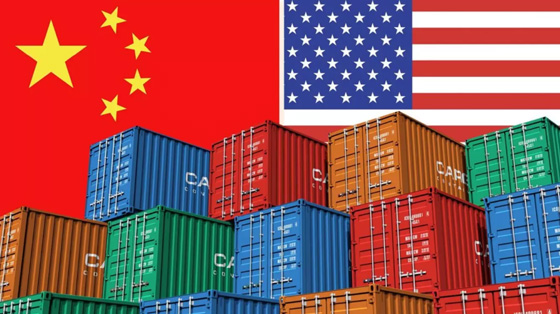
Since the 1970s, economic relations and trade have served China, until recently, as a ballast stone that stabilized the overall bilateral relationship and helped fend off challenges and impacts arising from the attitude and actions of the United States government and Congress.
The ballast stone has worked mainly because the American business community can make huge profits in China. In consideration of long-term investment interests and stable economic ties, those businesses supported a good bilateral relationship and made sure that stabilizing and developing trade relations with China became the mainstream voice in the U.S.
For example, in the 1990s, granting China permanent normal trade status and allowing it to join the World Trade Organization were top agenda items for corporate lobbying. At the beginning of the 21st century, the American Chamber of Commerce and U.S.-China Business Council developed a China lobby to actively influence the U.S. government and Congress on issues related to RMB exchange rates and playing a constructive role in preventing any tit-for-tat deadlock. It was also for this reason that the U.S. government was in favor of a positive and pragmatic trade policy with China and believed in maintaining a long-term stable trade relationship and creating a suitable space for economic activities.
When the trade war broke out in 2018, the U.S. regarded trade and investment as matters between states, rather than effective tool to control bilateral conflicts. The new thinking greatly damaged the most important thing — mutual trust — which had kept relations intact. It restricted the two countries’ ability to demonstrate their goodwill in negotiations and weakened the ability of both to fulfill their promises. Economic and trade relations were then turned into a blasting fuse that escalated frictions.
The background of all this was China’s rapid technological catch-up process, as it steadily opened wider and tapped the latecomer advantage in learning. As the technological dividend disappeared, profitability in China was seriously undermined, and American businesses became increasingly sensitive to Chinese investment laws, regulations and policies that were closely linked to their own interests.
In this connection, businesses became less enthusiastic about pushing for the stable growth of trade ties with China, and instead urged the U.S. government to use every arrow in its quiver to open the Chinese market and ensure reciprocity. President Donald Trump’s “America first” and “fair trade” propositions to a certain extent fit the sentiment of maintaining American companies’ absolute competitive advantage in China, through unilateral tit-for-tat means.
The last round of tariff increases, however, forced American businesses to bear more of the costs, and they cut extra investment, delayed development and other important business activities. The tariffs also undermined the global supply chains upon which the whole world depends. More important, the memory of escalating friction will have a far-reaching impact on private sector decision-making in both countries, leading to more uncertainties and destabilizing factors in sensitive security fields.
The U.S. also pursued strategic decoupling, the notion of “small yards with high walls” and “de-risking.” These are shorthand for protectionism and unilateralism, as manifested in tariff increases, export barriers and investment restrictions. They raised more practical challenges for China-U.S. economic relations and trade.
In the past few months, however, Secretary of State Tony Blinken, Treasury Secretary Janet Yellen, Special Presidential Envoy for Climate John Kerry and Secretary of Commerce Gina Raimondo have visited China. Frequent high-level visits and interactions have given bilateral economic and trade relations a more constructive tone. It seems that the U.S. has realized the importance and necessity of getting the economic and trade ties with China back on track. Those ties have now become a “shock absorber” in bilateral relations.
The American business community is fully aware of the significance of the China market and the possibility of losing competitive ground in the future by exiting. After the difficult year of 2022, American companies' interest in investing in China is rising. Despite the impact of the COVID-19 pandemic, China's manufacturing industry still accounts for 28.7 percent of the total global manufacturing output and remains an attractive investment destination.
China also has a huge domestic market, a skilled workforce, labor reserves, highly developed shipping and logistics infrastructure, economic development zones and super-large urban agglomerations.
At the same time, China is increasingly a market for manufactured goods, not just a producer. Its infrastructure allows enterprises to reduce transportation costs. More important, Chinese enterprises have become more competitive and innovative. American companies have realized that they may fall behind if they do not compete and cooperate in research and innovation with their Chinese peers.
It is precisely because of this that the American business community is trying to weaken the influence of politics as geopolitical tensions increase. In April, the American Chamber of Commerce reported a survey in which most American companies operating in China said they intended to stay. Three-fourths of the respondents said they would not relocate their supply chains.
China’s booming technology market and huge consumer population is also attractive for American capital investment. According to market tracking agency PitchBookData, American venture capitalists participated in 68 transactions in China this year, to the tune of $1 billion, despite the overall market slowdown.
For the U.S. government, it is particularly important nowadays to let economic and trade relations with China function as a shock absorber. Bilateral relations have become more competitive, with increased complexity and constant changes. However, an overemphasis on competition — or even its exaggeration — may lead to unrealistic, pessimistic conclusions. At present, economic exchanges and trade, as the most constructive means at hand, are critically important in effectively managing competition and avoiding serious emotional opposition or strategic miscalculation.
In other words, while upgrading its measures designed to put pressure on China — such as export controls — the U.S. should also strengthen its economic and trade ties with China to better manage competition. While it may use an economic toolbox, the U.S. also wants to use China-U.S. economic and trade interdependence to manage differences and avoid misjudgments.